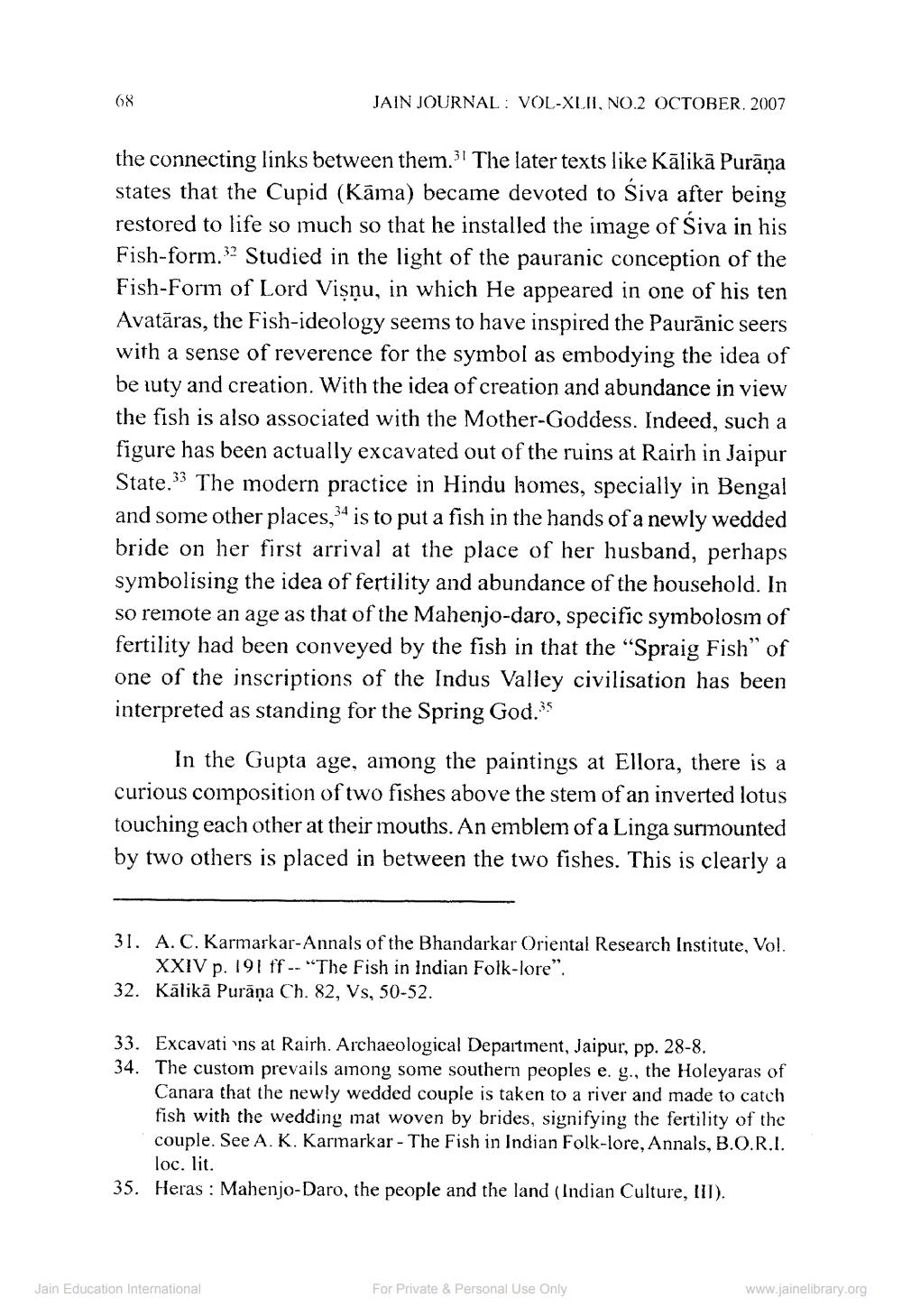________________
68
JAIN JOURNAL: VOL-XLII, NO.2 OCTOBER 2007
the connecting links between them. The later texts like Kālikā Purāņa states that the Cupid (Kāma) became devoted to Siva after being restored to life so much so that he installed the image of Siva in his Fish-form.Studied in the light of the pauranic conception of the Fish-Form of Lord Vişņu, in which He appeared in one of his ten Avatāras, the Fish-ideology seems to have inspired the Paurānic seers with a sense of reverence for the symbol as embodying the idea of be iuty and creation. With the idea of creation and abundance in view the fish is also associated with the Mother-Goddess. Indeed, such a figure has been actually excavated out of the ruins at Rairh in Jaipur State.33 The modern practice in Hindu laomes, specially in Bengal and some other places, 34 is to put a fish in the hands of a newly wedded bride on her first arrival at the place of her husband, perhaps symbolising the idea of fertility and abundance of the household. In so remote an age as that of the Mahenjo-daro, specific symbolosm of fertility had been conveyed by the fish in that the "Spraig Fish" of one of the inscriptions of the Indus Valley civilisation has been interpreted as standing for the Spring God."
In the Gupta age, among the paintings at Ellora, there is a curious composition of two fishes above the stem of an inverted lotus touching each other at their mouths. An emblem of a Linga surinounted by two others is placed in between the two fishes. This is clearly a
31. A. C. Karmarkar-Annals of the Bhandarkar Oriental Research Institute, Vol.
XXIV p. 191 ff -- "The Fish in Indian Folk-lore". 32. Kālikā Purāņa Ch. 82, Vs, 50-52.
33. Excavatins at Rairh. Archaeological Department, Jaipur, pp. 28-8. 34. The custom prevails among some southern peoples e. g., the Holeyaras of
Canara that the newly wedded couple is taken to a river and made to catch fish with the wedding mat woven by brides, signifying the fertility of the couple. See A. K. Karmarkar - The Fish in Indian Folk-lore, Annals, B.O.R.I.
loc. lit. 35. Heras : Mahenjo-Daro, the people and the land (Indian Culture, III).
Jain Education International
Jain Education International
For Private & Personal Use Only
www.jainei
www.jainelibrary.org




